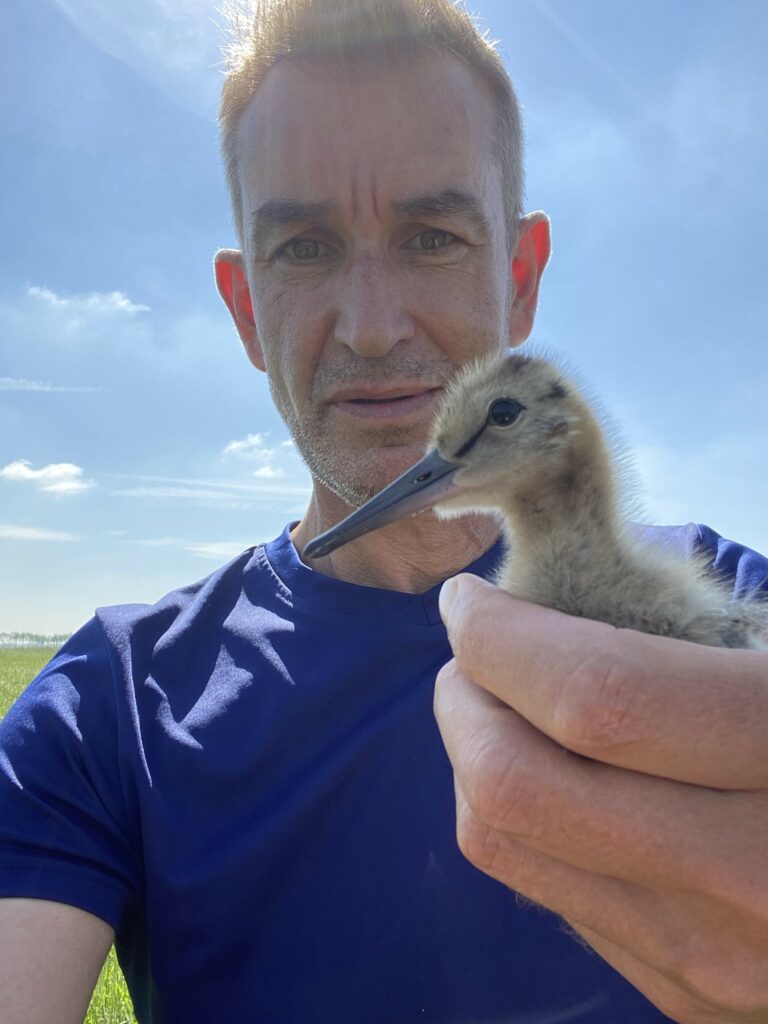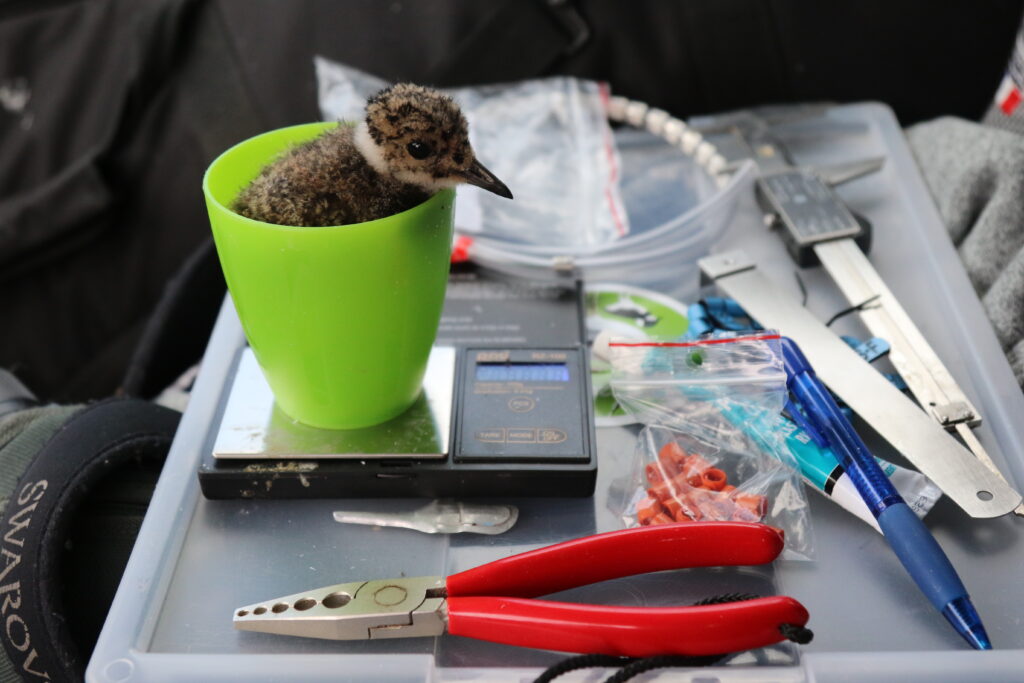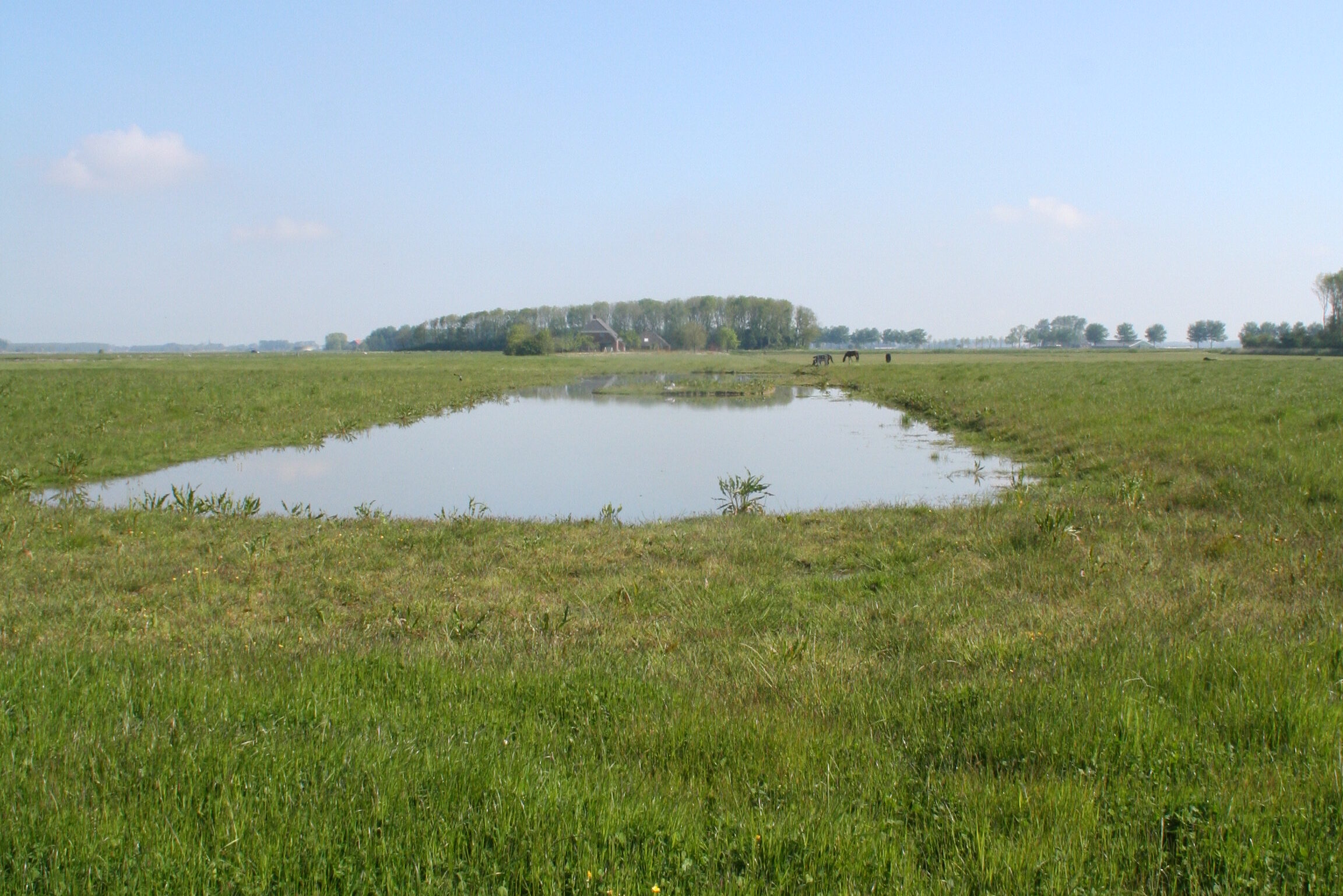How predator protection is hampering Eddie van Marum’s efforts to save the Netherlands’ national bird from extinction

Eddie van Marum has been working on farmland conservation projects for more than 30 years in his native Groningen, the northernmost province of the Netherlands. He specialises in linking scientific research teams with the local farming community. He explained: “Without a local connection, scientists often find it difficult to gain access to the land. I’m able to explain when the research is in the landowners’ interest and they trust me. It’s vital to have community involvement.”
Project Profile
- Location: Groningen, Netherlands
- Type of landscape: Water meadows
- Funding: Groningen Province, Collectief Groningen West, Stichting het Groninger Landschap and SBNL Natuurfonds
- Conservation measures: Grazing and mowing regime management, ditch restoration, scrape creation, rewetting, predation management
Eddie was recently involved in a two-year study of wader predation on water meadows 5-10km from the Wadden Sea, which is a UNESCO World Heritage Site designated for its unique habitat and birds, including Holland’s favourite, the black-tailed godwit. Run by ecologists Bob Jonge Poerink and Jelle Loonstra from Ecosensys and Jasja Dekker from Jasja Dekker Dierecologie, the project is joint funded by Groningen province and conservation organisations Collectief Groningen West, Stichting het Groninger Landschap and SBNL Natuurfonds.
Despite farmers being paid to improve habitat, waders including black-tailed godwit, redshank, lapwing, oystercatcher, avocet and little ringed plover have suffered dramatic declines in the past 20 years. During that period, the number of generalist predators has rapidly increased. Eddie said: “When I was young there were no foxes in this area; they arrived about 30 years ago. In the past ten years, stone martens have crossed the border from Germany and are now present in very high numbers. They are native to Holland, so I have no problem with them returning, but the rate at which they have expanded is alarming.”
Provided it is targeted and done according to best practice, Eddie is in favour of controlling predators such as the stone marten to protect wading birds and other wildlife. He said: “Predators play an important part in the ecosystem, so a ‘kill-it-all’ approach is not right. Some farmers are making ecological deserts out of their meadows and refuse to do anything to improve habitat because they think wader decline is due solely to predation, which is wrong. At the same time, predation must be addressed when it is clearly a problem.”

As well as being the Dutch national bird, black-tailed godwits are on the IUCN ‘Near Threatened’ list, and Eddie is part of the team studying to what degree stone martens are limiting the birds’ productivity. GPS tags were attached to the predators and cameras placed on nest sites to assess their impact. After hatching, black-tailed godwit chicks were fitted with transmitters to keep track of their movements and to discover what was preying on them. The report, published in November 2020, showed that due to disturbance by predators, primarily stone marten, none of the wader species were getting enough time on the nest to hatch chicks and many simply abandoned the area before the nesting period. It further revealed that godwit young in particular had very low survival rates: from the 50 chicks fitted with transmitters, only one survived.
Eddie said: “Stone martens either eat the birds’ eggs or collect them to consume later. A single marten is capable of clearing every nest in its territory, including those of black-tailed godwit, lapwing, redshank, oystercatcher, mallard, shoveller, gadwall and coot. Even on well-managed habitat, I’ve seen pairs of breeding waders drop from up to 30 to almost zero due to stone marten disturbance.”
Despite the scientific evidence that predation is one of the main reasons for the continued decline of waders in the region, very little can be done about it. In Holland, large expansions in the stone marten, fox and crow populations coincided with greater legal restrictions on predator management on a national and regional level. Mustelids were protected including stone martens (1949), weasels (1977), polecats (1991) and stoats (1991). Foxes were protected under the Flora and Fauna Act in 2001. In 2006 this was reversed, but trapping remains illegal leaving shooting as the only option for fox control. The use of Larsen traps for control of crows and magpies under a general licence was ended in 2007, and it is now almost impossible to obtain a special licence to use one.
Eddie said: “You cannot control crows sufficiently by shooting alone, and Larsen traps are highly effective at catching egg-finding specialists among corvid species, but whenever a licence is granted, animal rights organisations manage to fight it in court and generally win. Although on paper everything seems to be possible, national legislation in the form of the licensing system still works like a brake on conservation. The main reason for wader decline has been the intensification of agriculture, but there is no doubt that the second cause is regulation affecting predator control.”
Eddie believes many of the restrictions are counterproductive, increasing the risk of predators suffering. “Most people still think that snaring strangles a fox, but that’s not the case. Modern snares have stops, which means it’s like keeping a dog on a leash and non-target species can be released. It is a humane way to trap a fox with less risk of wounding than shooting at night. Nevertheless, night shooting remains one of the essential tools in the conservation kit.”

Eddie is convinced that predation is now the limiting factor partly because so much good work has been done to improve habitat on the water meadows in recent years through national government and EU-funded agri-environment schemes. Land use in the project area is predominantly intensive dairy on small farms between 40-100 hectares, so management of cattle grazing and mowing is key. If waders are present, parcels of land are taken out of production in the spring and inspections are made to decide when it’s safe for livestock to return. Fields have been rewetted with scrapes and ditches, and water levels raised to mitigate centuries of drainage. Thanks to the farmer-led Collectief Groningen West, there are more and more such measures. Compensation for income forgone and a flexible approach to schemes is essential.
Eddie said: “Farmers are running businesses. They are happy to help with wader conservation, but they need to be compensated and have the freedom to bend the rules, if necessary. One farmer took huge trouble to rewet his land as part of a scheme and had 17 breeding lapwing. If he’d raised the water to the stipulated height, all the nests would have been lost, so he ignored the letter of the agreement and had to forfeit the payment. It was ridiculous.”
Motivation for the farming community is essential for conservation success, and Eddie is concerned that farmers will be put off habitat improvement if it fails to reverse declines due to high predation levels. As a result of his and others’ research, he is encouraged that the regional government recently permitted a study involving trapping and killing stone martens, and it is looking at increased control of feral cats and foxes. But it’s difficult to undo protective legislation once in place and Eddie has a stark warning for policymakers in the UK. “Every penny of public money put into the conservation of ground-breeding species will be in vain, if further layers of protection are given to generalist predators and, for example, you ban fox snares and Larsen traps. I would love to tell the politicians in the UK, what they have now and what they risk destroying, based on what we have lost here in Holland. Predation is something that can be managed and must be managed or we will lose the battle to prevent the extinction of our waders. We cannot leave it up to nature, we need to make an active choice and if we decide to save our beautiful birds, half measures are no good.”
